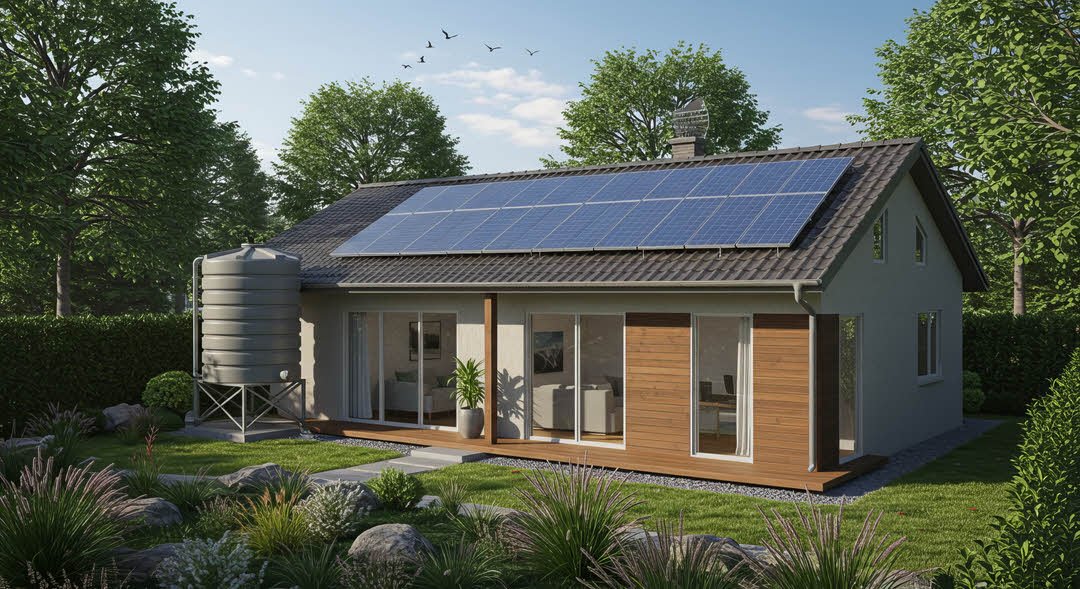5-Point Plan for Setting Up a Home Rainwater Catchment System in Vermont
Vermont’s abundant rainfall and strong environmental ethos make it an ideal location for rainwater harvesting. While the state sees an average of 35 to 45 inches of rain annually, much of this valuable resource runs off untreated into storm drains. A home rainwater catchment system can support gardens, reduce dependence on municipal wells or water utilities, and contribute to sustainable living. Here’s a five-point plan adapted for Vermont’s climate, legal considerations, and rural infrastructure.

1. Assess Site Conditions and Water Use
Start by evaluating your home’s potential for rainwater collection. Vermont’s average annual precipitation of around 40 inches offers strong collection potential. Calculate your yield with the following formula:
Catchment area (sq. ft.) × Annual rainfall (in.) × 0.623 = Gallons/year
For example, a 1,200 sq. ft. roof in the Burlington area could potentially harvest over 29,900 gallons of water annually.
Determine your intended uses—most Vermonters use collected rainwater for gardens, lawns, greenhouses, or livestock. With added treatment, some systems can also support toilet flushing or laundry. However, due to state health codes, using rainwater for potable purposes requires advanced treatment and permits, especially if the system is connected to indoor plumbing.
Before proceeding, check with your local town or zoning office. Vermont typically encourages rainwater harvesting; however, systems that impact groundwater, greywater plumbing, or stormwater runoff may require permits.
2. Design Your Roof Catchment and Conveyance System
In Vermont’s deciduous forest zones, leaf and pine needle debris is common, so begin with a high-quality gutter and downspout system with leaf guards and screens.
A metal, tile, or slate roof is ideal for harvesting clean water. If your home has asphalt shingles—which are common in Vermont—they can still be used for non-potable purposes like garden irrigation, especially with pre-filtration.
Install gutters with an adequate pitch to prevent pooling and clogging, and direct water via downspouts into a storage system. Use durable materials to withstand freeze-thaw cycles and snow loads, especially in northern Vermont.
3. Add a First Flush Diverter and Seasonal Filters
Spring pollen, autumn leaves, and winter grime can all contaminate water. Install a first flush diverter to ensure the dirtiest initial runoff is excluded. These diverters divert the first few gallons of rainfall before allowing cleaner water to enter your tank.
Following the diverter, add a pre-filtration system suited to Vermont’s debris-heavy seasons. This might include a mesh filter box, sediment trap, or gravel basin to remove fine particulates.
For water used in greenhouses or indoor plumbing, secondary filtration such as UV purification or carbon filters is recommended. If winter usage is anticipated, ensure components are freeze-protected or drainable.
4. Install a Winter-Ready Storage Tank
Your tank must be appropriate for Vermont’s freezing winters. Use above-ground, insulated tanks with drainage valves, or opt for buried cisterns below frost depth (typically 4–5 feet). Polyethylene tanks are affordable and durable, but concrete or fiberglass tanks offer better freeze resistance if installed underground.
Place the tank near your downspouts on a level gravel or concrete base. For gravity-fed systems, elevation helps maintain pressure. If using a pump, house it in a frost-protected enclosure.
Install an overflow outlet directed toward a swale or infiltration trench, not toward your home’s foundation. Include screened vent openings to prevent mosquitoes and vermin from entering.
5. Maintain the System Year-Round
In Vermont’s varied climate, maintenance is key:
Spring: Clean out winter debris, check for cracked pipes or fittings from frost.
Summer: Clear gutter screens and monitor water quality.
Fall: Remove leaf buildup from filters and diverters.
Winter: Drain or insulate above-ground pipes and pumps. If your tank is seasonal, shut it down and clean it out before the first hard freeze.
Inspect your tank for sediment buildup annually, and test water quality if using it in sensitive areas like vegetable gardens or for animals.
If you plan to use the system for potable applications, you’ll need to follow the Vermont Department of Health guidelines and test for bacteria, nitrates, and chemical contaminants on a regular basis.
VT Legalities
Rainwater harvesting is legal and encouraged in Vermont, particularly for non-potable uses such as irrigation, toilet flushing, HVAC systems, and car washing.
The state mandates that harvested rainwater be collected exclusively from rooftop runoff and does not establish specific water quality standards for these applications. To ensure safety and prevent contamination, Vermont requires the installation of debris filters at the gutter or storage tank inlet and mandates mosquito-proof screens with a mesh size of 1 millimeter on all openings.
While permits are generally unnecessary for outdoor systems, indoor or potable applications must comply with the 2018 International Plumbing Code and may require additional approvals.
Conclusion
Rainwater harvesting in Vermont is not only feasible but highly beneficial. With a reliable precipitation pattern and strong community focus on sustainability, installing a rainwater catchment system can support gardens, reduce well or city water use, and build climate resilience.
By following this five-point plan—evaluating needs, designing an effective catchment area, ensuring seasonal filtration, installing freeze-resilient storage, and maintaining the system—you can enjoy a long-lasting, efficient water harvesting setup that suits Vermont’s seasonal rhythms.
